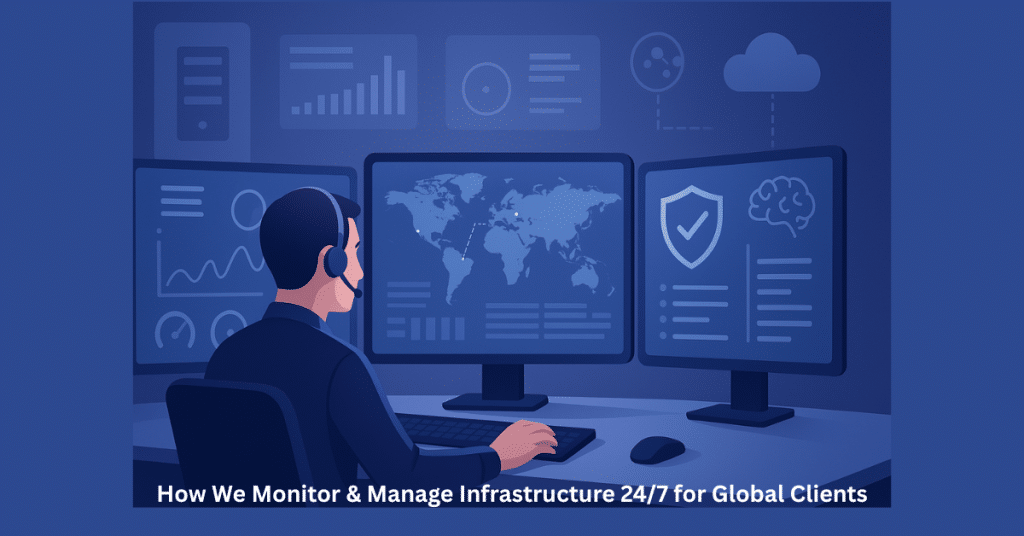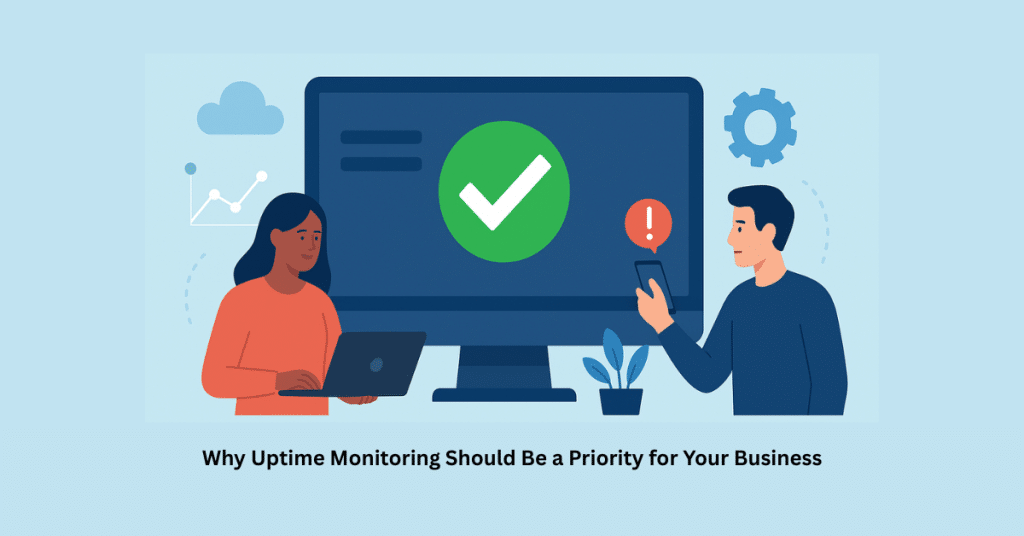In today’s digital economy, companies thrive or perish based on the health of their technology foundation. Whether it’s a small startup or an international conglomerate, all organizations rely on a synergy of hardware, software, networks, and systems to function effectively. For most, however, IT infrastructure is an afterthought—something you don’t even realize when it breaks.
But here’s the reality: a well-built IT infrastructure is not merely about keeping the lights on. It has the potential to revolutionize the way your business runs, grows, and competes in the marketplace. Get it right, and it becomes an unseen growth driver—strong, dependable, and out of sight until you most need it.
Why IT Infrastructure Matters More Than Ever
Consider your IT infrastructure to be the nervous system of your business. Your IT infrastructure brings together your teams, processes, and data and gets information flowing smoothly where it is needed.
In the fast-paced world of today, down time, sluggish systems, or unsecure networks are not just mere setbacks—they can translate to lost business, tarnished reputation, and angry customers. Conversely, when your infrastructure is solid and well-designed, it drives innovation, streamlines operations, and provides you with a competitive advantage.
The Key Elements of a Strongly Built IT Infrastructure
To see its untapped potential, let us dissect the primary pillars that constitute strong IT infrastructure:
1. Hardware That Works as Hard as You Do
Servers, storage devices, workstations, and networking gear make up the physical foundation. Spending in high-quality hardware that can scale ensures your systems won’t constrain your growth.
Tip: Always balance performance with cost-effectiveness—don’t overspend on tech you won’t utilize, but don’t skimp on reliability.
2. Software That Fits Your Business
From operating systems and productivity tools to enterprise applications, your software stack should support—not hinder—your workflows. Cloud-based solutions now make it easier to deploy and scale software without heavy upfront investments.
3. Networks That Never Sleep
Your network is the data highway. A safe, high-speed, and well-operated network keeps your team connected whether they’re in the office or half a world away. Good network design also provides the foundation for advanced features such as real-time analytics and AI integrations.
4. Data Management and Storage
Data is the new gold. How you back up, store, and recover it affects everything from compliance to decision-making. Scalable storage solutions and solid backup strategies shield you from data loss catastrophes.
5. Security at Every Layer
In a world of cyber attacks, a secure IT infrastructure needs to be designed in—not added on afterwards. Firewalls, encryption, multi-factor authentication, and ongoing monitoring keep your systems safe without holding you back.
The Business Benefits You Don’t Notice at First
The actual wizardry of solid IT infrastructure isn’t always apparent—it’s the ripple effect it produces throughout your business.
1. Consistent Performance
When your systems operate without hiccups, your team can spend time on high-value work rather than firefighting IT problems. Trust and reduced operational friction come from reliable performance between departments.
2. Improved Decision-Making
With instant access to correct data, leaders can make timely decisions with confidence. This speed can be the dividing line between grabbing a market opportunity and seeing it disappear.
3. Scalability Without Growing Pains
A modular, scalable IT infrastructure grows with your business. Whether you’re adding new employees, launching a product, or expanding into a new market, your systems can adapt without major overhauls.
4. Cost Efficiency Over Time
While investing in infrastructure might seem expensive initially, it reduces costly downtime, maintenance headaches, and unplanned upgrades in the long run. You spend less fixing problems and more driving innovation.
5. Enhanced Security and Compliance
A secure infrastructure doesn’t only shield you against hackers—it also keeps you compliant with industry standards. Compliance is a given benefit, not an eleventh-hour rush.
Common Errors to Avoid
Even seasoned companies get it wrong when establishing or renewing IT infrastructure. Here are some traps to avoid:
- Addressing IT as a single project rather than a developing resource.
- Leaving out scalability, resulting in costly replacements later on.
- Over-engineering the design with too many tools and platforms.
- Underestimating security threats, exposing systems to risks.
- Failure to train employees on new systems, resulting in adoption failure.
How to Construct a Well-Designed IT Infrastructure
Building a strong system does not occur overnight, but the process can be smooth if you proceed systematically.
1. Evaluate Your Current Status
Begin by reviewing your current hardware, software, and network performance. Identify inefficiencies, security vulnerabilities, and areas of inefficiency.
2. Establish Clear Objectives
Your infrastructure must match your business strategy. Do you have global growth in mind? Support for remote workers? Speedier product development? Your objectives inform your technology decisions.
3. Select the Correct Architecture
Determine whether to go on-premises, cloud, or hybrid. Each has advantages and disadvantages—cloud provides flexibility, on-premises provides control, and hybrid provides a middle ground.
4. Security Planning from Day One
Lace your design with multi-layered security, frequent patching, and active monitoring. Prevention is always less expensive than recovery.
5. Invest in Monitoring and Maintenance
Harness automation tools to monitor performance, identify anomalies, and allocate resources optimally. Regular maintenance keeps things healthy and predictable.
6. Train Your People
Even the best IT infrastructure is useless if users don’t know how to use it. Offer training and support so adoption can happen smoothly across the organization.
The Role of Cloud and Virtualization
Modern infrastructure design increasingly relies on cloud services and virtualization technologies. They offer flexibility, cost control, and access to cutting-edge tools without heavy upfront investments.
- Cloud Computing allows you to scale resources on demand, pay for what you use, and access services from anywhere.
- Virtualization helps you run multiple applications and operating systems on a single server, reducing hardware costs and improving utilization rates.
Both can slim down your infrastructure to make it more responsive and agile.
Real-World Example: When IT Infrastructure Is a Game-Changer
Suppose there is a mid-sized e-commerce firm that has trouble with sluggish website response during holiday seasons. Each holiday season, traffic surges overwhelm their servers, resulting in lost revenue and customer loyalty.
By rearchitecting their IT infrastructure with scalable cloud hosting, load balancing, and real-time monitoring, they not only eradicated downtime but also accelerated their website load time by 40%. The next holiday season, their sales spiked 25%—without spending a penny more on marketing.
The Future of IT Infrastructure
The decade to come will introduce even greater changes in the way we design and manage technology systems. Automation with AI, edge computing, and advanced analytics will continue to revolutionize IT infrastructure from a support group to a strategic force.
Companies that invest early in flexible, future-proof designs will be better prepared for whatever lies ahead—whether it’s sudden market changes, disruptive innovations, or unanticipated global events.
Conclusion: Don’t Let Your Infrastructure Stay Invisible
It is easy to take for granted something that hums along in the background. But in fact, your IT infrastructure is the base upon which your whole business operates. An effective system provides much more than it just works—it increases efficiency, enables innovation, and enables you to outcompete.
If you view it as a strategic asset and not only a cost center, you will tap its untapped potential. And once you’ve experienced the difference, you’ll never see your technology backbone in quite the same way again.



